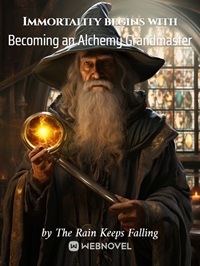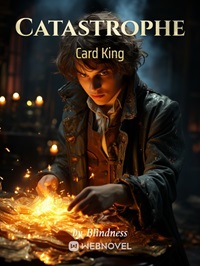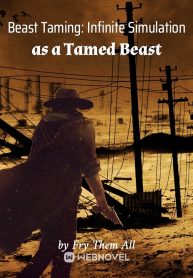Magical art
Sponsored Content
Translated by NotBlueYet
Edited by Schwarzel
Even though the mage order came to inspect, the lecture will be held as usual.
Farah is in the back of the classroom observing the lecture scene, while Julian is not in the classroom as he has something to do.
“Then I will begin my lecture with an overview of magical engineering.”
“Ms. Katherina said and looked around the entire classroom.
In the upper secondary school, students choose to take lectures, except for some required courses.
It is similar to the policy of the university in my previous life.
Although Magical Engineering was one of the elective classes, there were many students who wanted to learn, and the seats in the classroom were almost always filled.
I’m sure it’s partly because Ms. Katherina teaches so well.
“Magical engineering is a rapidly developing field, and is one of the hottest areas of research in the magical industry. According to experts, there will be a day in the future when magic engineering will allow anyone to handle magic. However, the general consensus is that there is not that much potential in magical engineering. It’s abrupt,” Dr. Katherina said before she began to speak.
“What do you think reality is?”
In response, some of the students expressed their own opinions.
Ms. Katherina listened carefully to each individual’s opinion and, “I understand your point of view, but I need to change your mind about reality when it comes to magical engineering.”
After she said that, she began to explain.
Sponsored Content
“For example, imagine a flower blooming on the side of the road; if no one recognizes it, how can you call it real?”
Dr. Katherina’s lecture style is to ask questions and make students think.
‘I want you to be active, not passive, in your lectures,’ she once told me.
“The flower is real when it’s there, before you even know it’s there.”
Natalie took the initiative in answering Dr. Katherina’s question.
The students phase in agreement with that statement.
“Yes,” after listening to Natalie’s opinion, Dr. Katherina asked a question again.
“But do you have any way of proving it?”
If you ask me that, I would have to say that I cannot prove it.
Because the flower is not… recognized by anyone.
On the contrary, this story loses its premise as soon as someone recognizes it.
Sure enough, Natalie shakes her head and replies, “No, I don’t.”
“In the field of magical engineering, this state of affairs is referred to as “unreality,” and since there are as many people as there are perceptions, there are as many people as there are realities. …… An example of this is the color. ‘Does this dress, which I think is purple, really match Natalie’s idea of purple?’”
The teacher asked Natalie a question, pointing to the purple-toned clothes she herself wore.
Natalie understood the meaning of the question at once, and
Sponsored Content
“No, there’s no match.”
Dr. Katherina nodded in satisfaction, “That’s correct.”
“The same object can be seen in as many different ways as there are people, which means that there are as many realities as there are people’s perceptions.”
Seeing that Natalie nodded, Dr. Katherina continued her explanation.
“In the first place, human beings are unable to distinguish between reality and illusion,…… and talking about this, we are digressing. …What is reality is a very difficult discussion, but … every living being can only perceive the world from its own point of view, even if there is a God-like being who can see everything in this world, as long as God is a self-aware being, he also creates reality in his own perception.”
At this point, the teacher stopped talking once and checked the students’ expressions.
Dr. Katherina proceeds with her lecture in this way, watching the students’ reactions.
That was the same as when I was tutoring, and I was very grateful that they were able to adapt to our level of understanding.
I nodded my head the moment my eyes met the teacher’s because I could understand most of what she said.
The teacher then nodded once and began to tell the rest of the story.
“As you know, magic is an embodiment of imagination, and if we replace “imagination” with “perception,” we can say that magic is a technology that transforms perception into reality.”
Dr. Katherina takes a breath and then continues her story.
“People can do magic not only because they have magical powers, but also because they have the ability to recognize things.”
The teacher dared to pause, as if she was aiming for a pause, to see the students’ reactions.
The students, including me, wondered what the teacher was trying to say.
Sponsored Content
“It is natural for inanimate objects to be unable to handle magic, and it is difficult to react to that now that it has been said. Well,” says Dr. Khazarina.
“In magical engineering, magic is invoked from a medium such as paper or wood without the intervention of human perception, so how can inanimate objects invoke magic if they can’t handle it?”
The classroom is momentarily quieted by the teacher’s question.
I’m sure that Dr. Katherina wanted to ask this question, so she made a frontal gesture.
“Inanimate objects cannot perceive reality, but it is possible to make inanimate objects perceive reality. magical engineering is the art of making a medium such as paper perceive reality, and the magic circle is used to do this. …… is magical engineering.”
As I listened to the lecture, I was trying to connect magical engineering with a completely different field.
It is analog-to-digital conversion, commonly known as A/D conversion, which is done by computer processing.
Computers cannot read continuous analog information.
However, most of the information in the world is analog signals, and it is necessary to read analog signals into a computer.
So, the analog signal is replaced by 01 discrete information–a digital signal, which is recognized by the computer.
A/D conversion is used in this process, and the computer processes the received digital signal and outputs it.
I’m going to try to connect these previous lives’ knowledge with magical engineering.
It was easier to understand if the magicians were viewed as A/D converters, the inanimate objects as computers, reality as analog signals, the information to be recognized by the magicians as digital signals, and the activation of magic as output.
And although I think like that, I’m the only one who can see it this way, and I don’t even know if this idea is right in the first place.
”Now that we’ve talked about all this, magical engineering is the study of magicians, so let me show you the magicians I’ve created.”
Sponsored Content
The teacher takes out a wooden board from the pew.
A 20 cm square thick board.
There was a magic circle drawn on it, with shapes and lines intertwined to create a complex pattern.
It must have been drawn based on some kind of regularity, but as I have no knowledge of it at all, all I can think of is that it’s a strange pattern.
I’m going to explain this magic circle to you now.
The teacher said, and began to explain the magic circle drawn on the wooden board.
To be honest, the content was difficult to understand.
Other students seem to have abandoned their understanding in the process.
But even so, Ms. Katherina didn’t stop talking, and unusually, she left her students behind as she continued to explain.
This is the immersive state of Dr. Katherina that we see sometimes.
She is a researcher by nature and tends to go off on her own when she gets into something.
Ms. Katerina finally realized that a hatena mark was floating in her student’s head, and hurriedly interrupted her explanation.
Just at that moment, the chime rang and the lecture was over.
There’s one thing I’ve come to understand about magicians.
The guy who invented the magic circle thing is a horrible genius, is what I’m saying.
Sponsored Content
SPONSORED CONTENT











